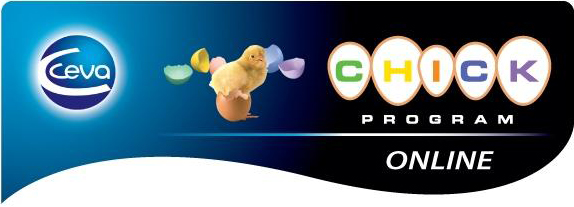The information below is presented by ThePoultrySite.com on behalf of CEVA SANTE ANIMALE.
If you wish to contact CEVA SANTE ANIMALE. please visit their contact page
If you wish to contact CEVA SANTE ANIMALE. please visit their contact page
Online Bulletins

2008

January - Hatchery Vaccination, Towards a full control of Vaccine Administration
Vaccination of the birds at hatchery started in the 70’s to face huge losses due to Marek’s Disease, especially in USA for broilers. The success achieved by this concept of prevention encouraged research and companies to develop new products and equipments to this segment and over the years vaccination at hatcheries has become an increasingly important practice in the poultry industry. Nowadays, large producing countries like USA, Brazil or some EU countries reach 100 % of broilers injected in ovo or at day-old and sprayed at day-old. African, Middle East and Asian countries are largely practicing as well spray and injection at day-old for the control of Newcastle disease. New generations of vaccine, like immune complex IBD vaccine or Recombinant based on HVT vector against IBDV, Newcastle disease or Laryngotracheitis, are increasing and strengthening the interest on the hatchery vaccination.

March - Vaccination in the Hatchery, the Assurance of a Good Start
For various reasons including the continuous reduction of the duration of the fattening period of the broiler, the increase in size of the poultry operations and the frequent difficulties to find properly trained and / or motivated manpower at farm, vaccination at the hatchery is becoming more and more popular and will for sure strongly develop in the coming years. It includes administration of the vaccines either by injection (“in-ovo” or subcutaneous routes) or local application (spray or eye-drop). It has been for many years, the only way to ensure an early and/or improved resistance to mucosal diseases like Infectious Bronchitis or Newcastle Disease. More recently, new types of vaccines based on immune complex or recombinant technologies have been launched. Both have proven to be capable of inducing active immunity in the presence of maternally derived antibodies, which were previously neutralizing classical live attenuated vaccines if given at a too early age. This capacity, associated with the precision and the reliability of individual injection, is responsible for much better vaccine coverage of the flocks. Vaccination at the hatchery is actually opening the door to a real control of broiler diseases.

May - Passive Immunity: Part 1
Maternal Derived Antibodies (MDA) or also known as Passive Immunity are the naturally transfer of immunoglobulins from one individual to another. In birds, maternal antibodies are passed from hyper-immunized or naturally infected breeder hens to the progeny through the egg. This Passive Immunity has relatively short duration, commonly 1-2 weeks and generally less than 4 weeks and its function is to protect young chicks during a period (first few weeks) when their immune system is not fully developed to proper react to an early challenge.

July - Passive Immunity: Part 2
The first part of the article “Chicken Passive Immunity” described how hens transfer their antibodies to their progeny and how important such antibodies are for the protection of the chicks against some major respiratory diseases during the first few weeks of their lives.
In this second part, it will be described the importance of the passive immunity in terms of protection against Infectious Bursal Disease (IBD), Chicken Infectious Anemia (CIA) and Marek’s Disease (MD).

September - Basic Aspects of In-Ovo Injection in Commercial Hartcheries
Although the In-Ovo vaccination has been widely used in many countries all over the world for over 20 years, many questions still surround this technology.
To achieve the best of In-Ovo vaccination not only a good machine is essential. To understand the relation between chick quality and In-Ovo injection, it is important to realize the factors directly influencing In-Ovo application. Some of those factors have expressive influence in the final expected result: a good and effective vaccination.
Chick Quality and In-Ovo vaccination are intrinsically related when we discuss many factors such as: Embryonic age and hatchability, site of injection, vaccine preparation and immune response, hatchery hygiene and sanitation.
In this article some of the factors and basic aspects related to In-Ovo injection will be discussed. IN-OVO

November - Disinfection of Hatching Eggs, Importance and Practical Aspects
Nowadays, good cleaning and disinfection practices are widely acknowledged as part of the optimization of the viable DOC production in a hatchery. Good egg hygiene has often proven to improve the viability and the quality of the DOC (Archienbuwa et Coll., 1980).
Indeed, a strong bacterial penetration through the egg shell will affect several aspects in hatching quality, like early embryonic mortality, egg yolk infection, DOC mortality before hatching, besides a significant higher mortality and heterogeneity of the chicks during the first week of age.
GENERAL REMINDER: Product indications, usage instructions & withdrawal periods may vary by Country. Always follow label instructions and consult your veteriarian or poultry health adviser. |
|
This page contains information on veterinary pharmaceutical and biological products that are sold in several different countries and areas where they may be marketed under different trade names and pursuant to different regulatory approvals. Accordingly, ThePoultrySite and CEVA SANTE ANIMALE give no guarantee that the details presented are correct with respect to all locations.
|










